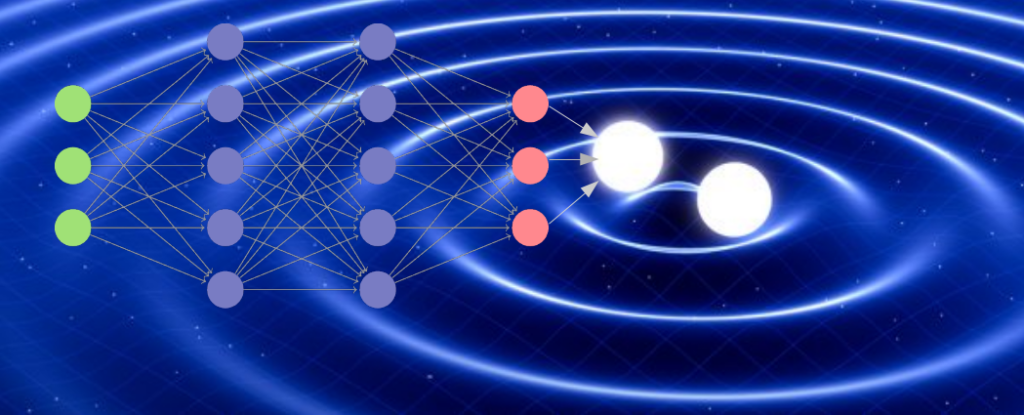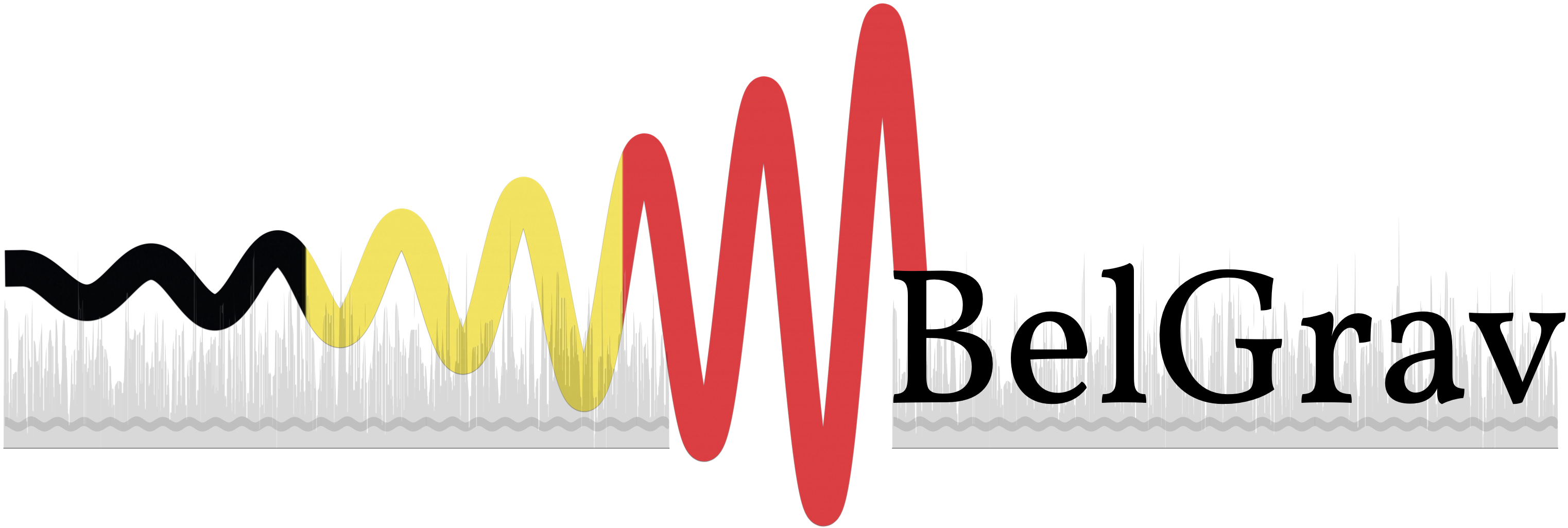Searches for a stochastic gravitational wave background
Federico De Lillo, Kamiel Janssens, Max Lalleman, Aäron Rase, Alba Romero-Rodriguez, Kevin Turbang, Stavros Venikoudis, Alberto Mariotti, Alexander Sevrin, Nick van Remortel
The stochastic gravitational wave background (SGWB) originates from the superposition of gravitational waves of many astrophysical and cosmological sources. The variety of possible sources is huge, ranging from binary coalescences to cosmic strings or even gravitational waves produced during inflation or phase transitions. A detection of the SGWB would have a large impact on our understanding of black hole populations or cosmological models. Observing gravitational waves of inflation would be at least as revolutionary as the first observation of the cosmic microwave background.

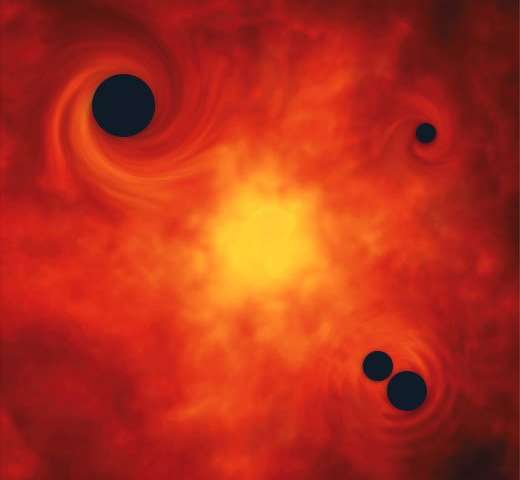
Cosmology: searches for inspiraling primordial black holes
Eleni Bagui, Federico De Lillo, Ioanna Stamou, Sebastien Clesse
The detection of gravitational waves from the merger of heavy binary black hole and neutron star systems has driven the worldwide interest in gravitational wave physics. However, we have only seen the last second or less of these systems’ lives. If the black holes were less massive, we could actually have seen them as they were slowly moving towards each other. Lighter black holes imply different physics and formation mechanisms for them in the universe, hence a detection of these so-called primordial black holes would be a major breakthrough in physics.
Dark matter interactions with gravitational wave detectors
Andrew Miller
We know that a lot of matter we cannot see affects the motion of the stars around the center of the galaxy. This matter is present on earth, and in theory can interact directly with the mirrors in LIGO-Virgo in a specific way depending on the mass of the constituent particles. Since the dark matter is always present, the signal is at a fixed frequency that impinges on the detector. We are developing methods that search for this unique signature of dark matter.
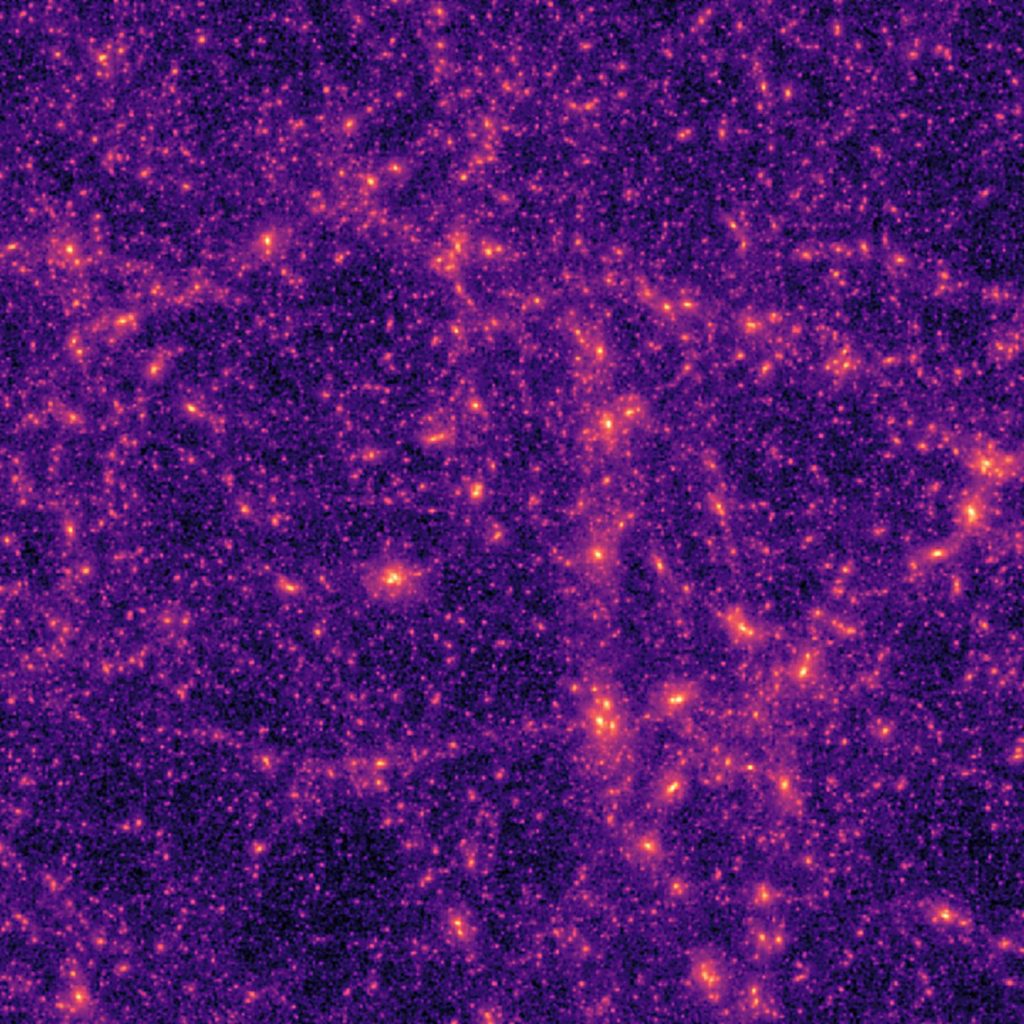
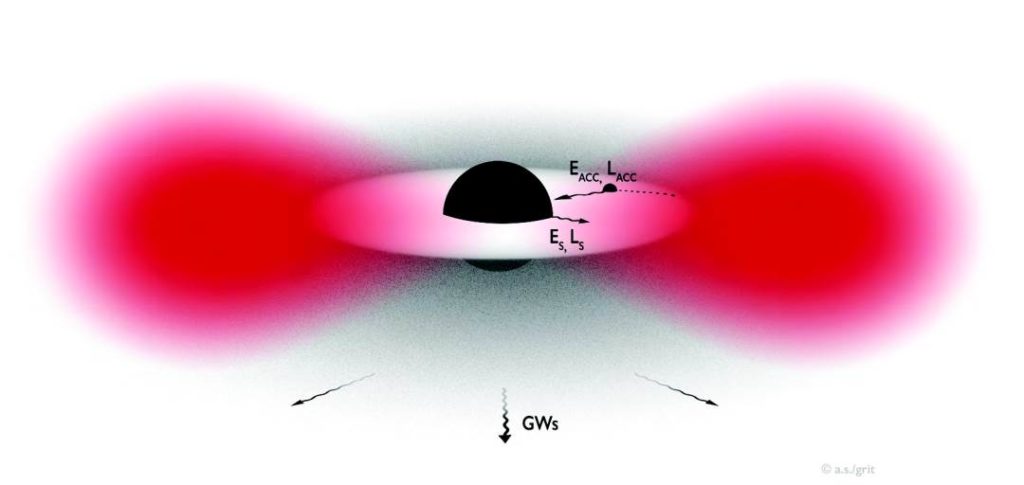
Searches for dark matter around black holes with gravitational waves
Antoine Depasse, Andrew Miller
If ultralight dark matter exists and is composed of bosons, dark matter clouds can form around black holes after their birth and grow exponentially in size by extracting energy and spin from the black holes. Once the cloud has fully formed, the bosons will couple to each other and annihilate, emitting almost monochromatic (fixed energy) gravitational waves for extremely long periods of time. The boson can be treated as a scalar, vector or tensor field, which all imply different timescales for growth and deletion, and gravitational wave signal strength. Additionally, the implications of a detection of differ for each of these fields.
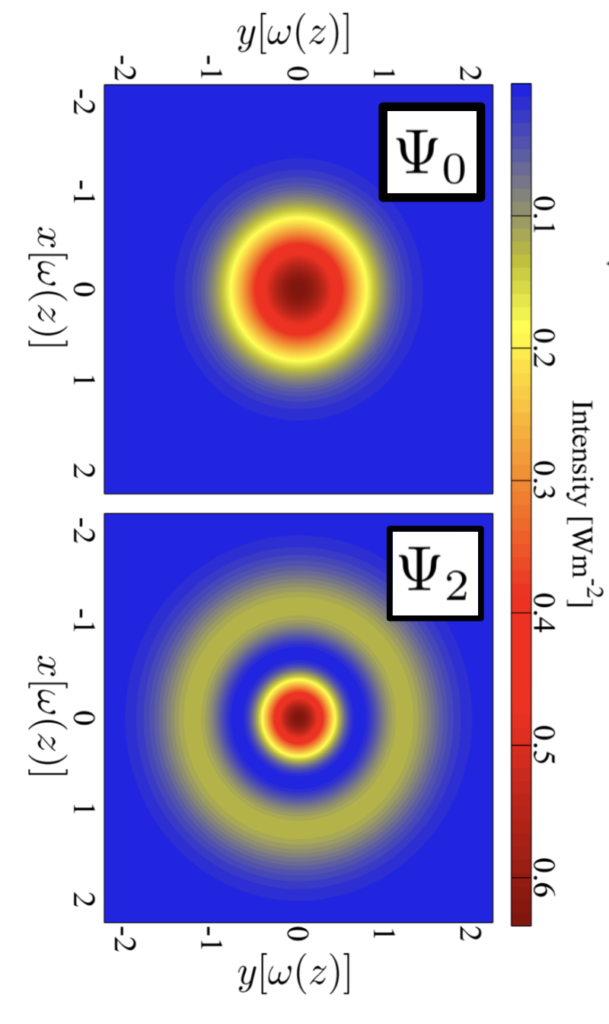
Mode matching
Joris van Heijningen
A gravitational wave detector consists of many coupled optical cavities, the shortest being centimeter scale with sub-millimeter beams and the longest being several kilometers long with several centimeter size beams. When an input beam’s shape is not matched to the cavity eigenmode (the preferred beam shape of the cavity), we speak of mode mismatch (MM). MM is a source of optical loss from the fundamental mode, shown in the top figure, into cylindrical higher order modes (HOMs) of which an example is shown in the bottom figure. Minimising optical losses in a gravitational wave detector is important if techniques such as squeezed light injection are to be more fruitful. At the moment, no gravitational wave detector has an automated way to control MM. We investigate error signal generation by detection of the cylindrical HOMs. These signals then serve as input for control of MM a coupled cavity set-up.
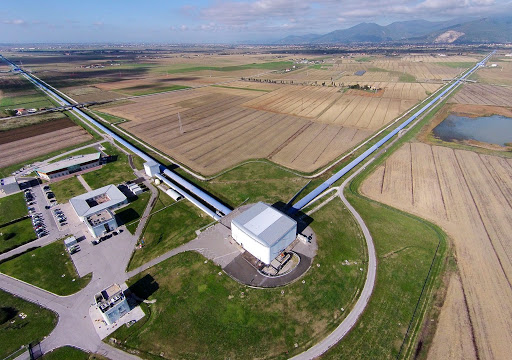
Noise characterization and noise hunting
Kamiel Janssens, Max Lalleman
In order to measure gravitational waves our detectors need to be able to execute measurements with very high precision. Therefore continuous efforts are needed to characterize noise sources which have impact our sensitivity and ability to observe gravitational waves. Apart from characterizing these noise sources it is also crucial to mitigate these noise sources or at least try and reduce their impact on our measurements. This requires both data-analysis to study the present noise sources, as well as taking on site actions.
Cryogenic inertial sensor development
Joris van Heijningen
Gravitational wave signals below a frequency of about 10 Hz are obscured by thermal noise in current detectors. Because temperature is the vibration of atoms in some respect, making the distance measurement between the mirror surfaces more challenging, the mirrors of future detectors will need to be cooled down to temperatures around 10 K. We need to control the motion of some of the cold objects, for which we develop inertial sensors that can survive this harsh environment.
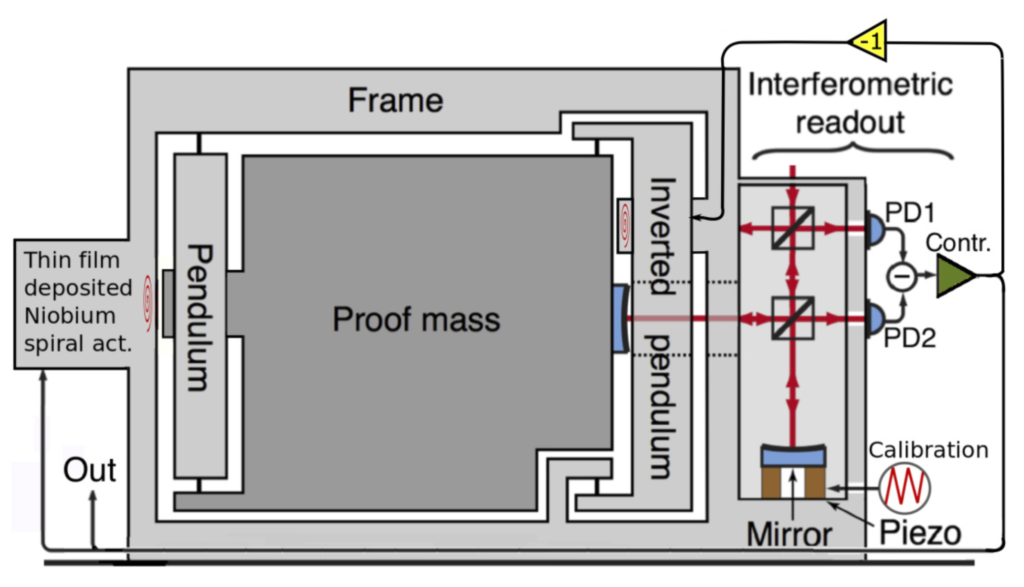
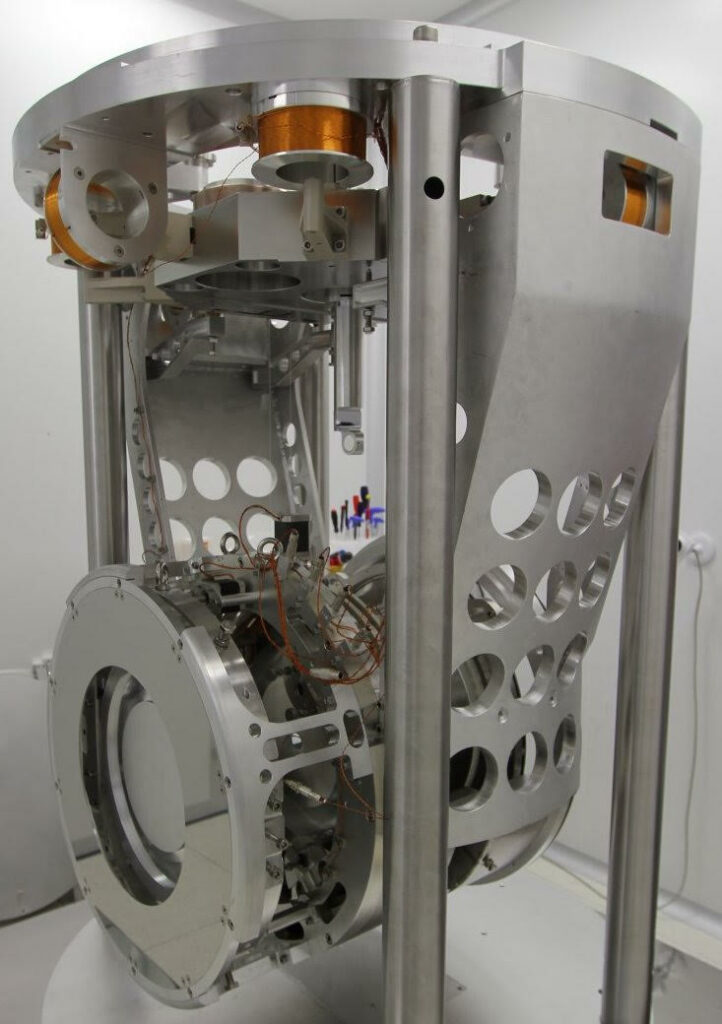
Construction and development of LVDT coils for seismic attenuation systems
Kumar Akhil Kukkadapu, Anoop Nagesh Koushik, Pengbo Li, Hans Van Haevermaet
An important limiting factor to the sensitivity of ground based GW detectors is the large contribution of seismic noise, and to eliminate these contributions enhanced seismic attenuation systems are needed that consist out of several filter stages to dampen both horizontal and vertical movements. A crucial ingredient of such systems are linear variable differential transformer (LVDT) position sensors. They use coils to provide precise and robust measurements, and when combined with voice coil actuators they provide accurate monitoring and control of the attenuation system to enable active damping of seismic noise. We aim to construct and further develop such LVDT coils for future GW observatories or detector upgrades by looking into novel LVDT + Voice Coil combinations, improved electronics, and optimised read-out analyses.
Projects from alumni
Detecting the early inspiral phase of a gravitational-wave signal with convolutional neural networks
Grégory Baltus
The goal of this project is to adapt techniques of machine learning (convolutional neural networks) for the search of compact binary coalescences coming from light objects, such as neutron stars or light black holes. We try to apply those techniques to detect a gravitational wave before the end of the signal. That could lead to an early warning system, which will be useful for multi-messenger astronomy.
